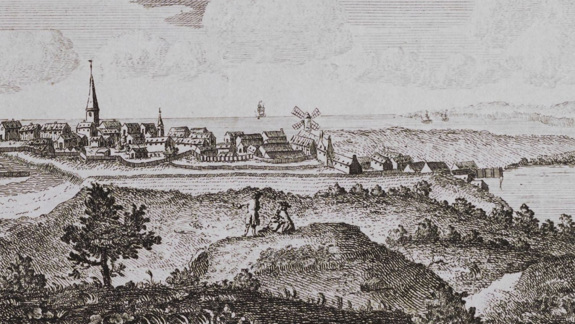Jacobites: A timeline
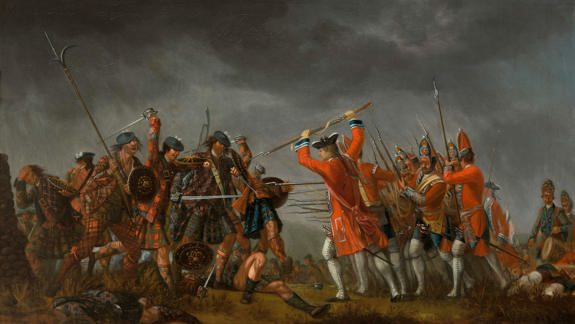
Introduction
Who were the Jacobites?
The Jacobites were supporters of the exiled Stuart king James VII of Scotland and II of England and his descendants after the 'Glorious Revolution' of 1688. They sought to restore the Stuart monarchy in Scotland, England and Ireland. Their movement remained a viable political force until the mid-18th century.
The Jacobite movement
The seeds were sown when Charles II died in 1685. He was of the House of Stuart, who had sat on the throne of Scotland since 1371, and also those of England and Ireland since 1603. Charles died without a legitimate heir and so the crown passed to his Catholic brother, James.
Despite initial support, James VII and II's Catholic faith and his efforts to grant more rights to Catholics began to cause concern. The Protestant ruling classes feared for their own positions. To weaken James's support, they presented him as a king who would fall under the influence of the Pope and attempt to establish an absolute monarchy of the kind practiced by Louis XIV in France. When James's son was born, his opponents feared a future Catholic dynasty and began to plot against him.
Timeline
February 1685: Charles II dies
James VII and II crowned king following the death of Charles II.
July 1688: 'The Old Pretender' is born
Birth of the King's son, James Francis Edward Stuart, later known as the 'Old Pretender'.
The King's opponents insisted that he was not the legitimate son of James VII and II, but rather an impostor smuggled into the royal birth chamber, hence 'Pretender'. Following the emergence of his own son (who would lead the 1745 rising), James later became known as the Old Pretender and his son Charles as the Young Pretender.
The fear of Catholic succession in a predominantly Protestant country grows.
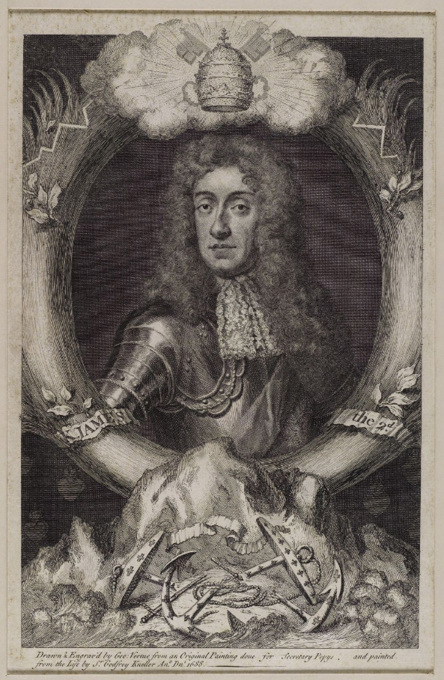
November 1688: William of Orange invades England
With the support of English nobles and the Bishop of London, William of Orange invades England.
James declared his 'horror' at what he saw as a foreign attack by his nephew and son-in-law. James defends the legitimacy of the birth of his son, but it was this, along with James's efforts to repeal the law against Catholics in public office that finally convinced William to invade.
December 1688: Glorious Revolution
King James flees to France.
On William's arrival in England, James chose not to fight. Before he fled, he allegedly threw the Great Seal of the Realm into the River Thames. This was the symbol of a monarch's power to approve state documents. James wanted to disrupt the passing of laws in his absence.
Rather than depose him, the English Parliament considered his actions an act of abdication. This essentially bloodless coup led to it being termed the 'Glorious Revolution' by supportive historians.
January 1689: William and Mary take the throne
William III and II (also known as William of Orange) and his wife Mary, daughter of James, become joint monarchs.
With James in exile, the English Parliament appoint his daughter Mary and her husband William of Orange as joint monarchs.
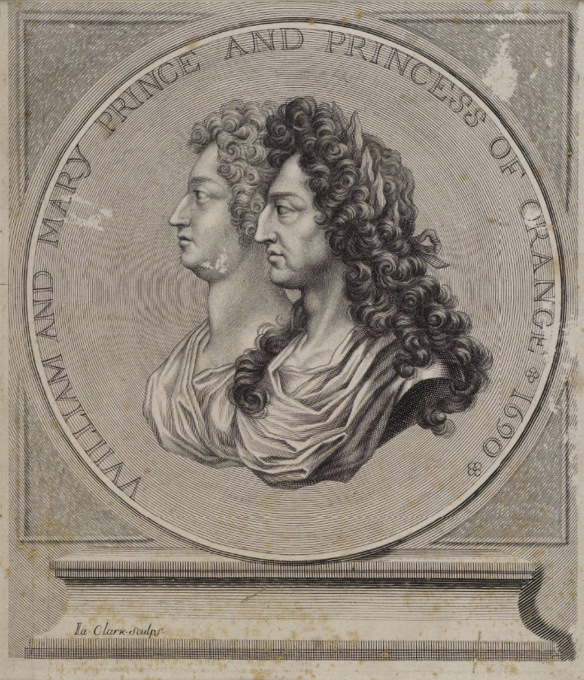
July 1689: Battle of Killiekrankie
Supporters of James (Jacobites) defeat government forces at Killiecrankie in Perthshire but are unable to maintain momentum.
It became clear that the Scottish Parliament would also accept William and Mary as monarchs. John Graham, the first Viscount of Dundee, remained loyal to James and left Edinburgh to raise support for his exiled king. His leadership at the Battle of Killiecrankie inspired a victory but he died on the battlefield. This first Jacobite rising collapsed soon after.
July 1690: Battle of the Boyne
William of Orange defeats James at the Battle of the Boyne in Ireland.
This battle saw James's forces clash with William's army. William's victory secured his position on the throne and marked a turning point in the struggle for power between Catholics and Protestants in Ireland.
August 1691: A royal pardon
William of Orange offers a pardon to all Jacobites who swear loyalty to him.
This offer was part of William's strategy to pacify the Highlands and reduce the threat posed by Jacobite supporters. He aimed to encourage reconciliation and bring stability to his reign after the turbulent events of the 'Glorious Revolution'.
February 1692: The Massacre of Glencoe
The Massacre of Glencoe sees government forces slaughter members of the MacDonald clan who were unable to swear loyalty to William of Orange in time.
William offered an amnesty to clan chiefs who had fought against him if they would take the oath of allegiance. The chief of the Glencoe MacDonalds failed to take the oath by the required date. This gave John Dalrymple, first Earl of Stair and secretary of state for Scotland, the opportunity he'd wished for to punish the clan. Captain Robert Campbell of Glenlyon was ordered to attack in a letter from Major Robert Duncanson (below).
38 MacDonalds were killed by government troops. They had been guests who had accepted the hospitality of the men they would murder. 40 women and children died of exposure after their homes were burned.
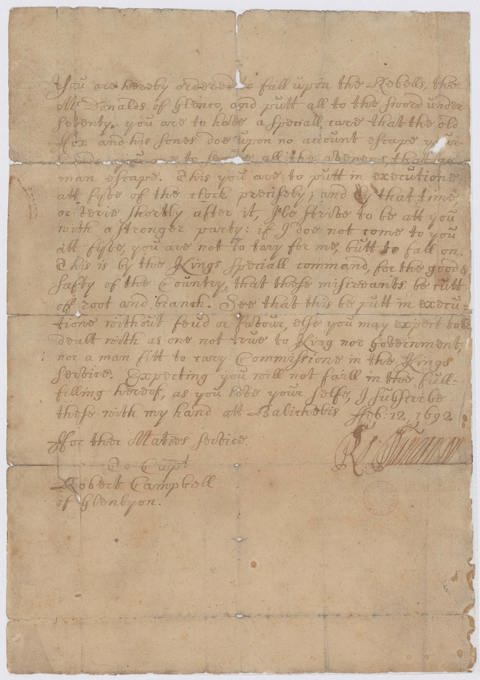
July 1700: Succession crisis
The last surviving child of Queen Mary's sister dies, creating a succession crisis.
Anne Stuart's (later Queen Anne) last surviving child was Prince William, Duke of Gloucester. His death left Anne without an heir.
This event prompted the Act of Settlement 1701.
June 1701: Act of Settlement
England passes the Act of Settlement ensuring a Protestant succession.
There were many Catholics ahead of Sophia, the Electress of Hanover, in the line of succession. Not least James Francis Edward Stuart, son of James VII and II. However, the Act of Settlement led to Sophia, granddaughter of James VI and I, becoming the heir presumptive (meaning the birth of a nearer heir would be next in line).
Sophia died two months before Queen Anne and so the succession passed to her heir, her son George. He would begin the rule of the House of Hanover in 1714.
September 1701: James VII and II dies
Death of James VII and II.
With his passing, Louis XIV of France recognises James Francis Edward Stuart as King James VIII and III.
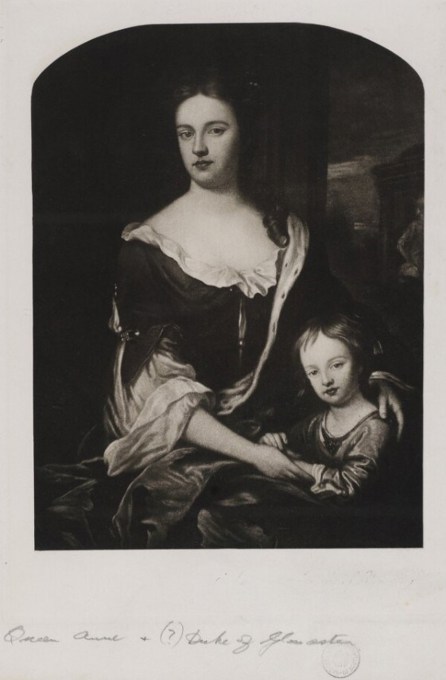
March 1702: William of Orange dies
The death of King William of Orange.
King William III (II of Scotland) succumbed to complications from pneumonia. These developed after he fell from his horse and broke his collarbone.
Queen Anne succeeds to the throne.
September 1703: Act anent Peace and War
Scotland passes Act anent Peace and War.
This is in response to England's Act of Settlement. The act is to prevent future monarchs taking Scotland to war without parliamentary consent.
July 1704: Act for the Security of the Kingdom
Scotland passes the Act for the Security of the Kingdom.
The act allows Scotland to name a monarch independent of England upon the death of Queen Anne. This raised fears in England of a Stuart monarch on their border and quickened English interest in parliamentary union.
February 1705: Alien Act
England retaliates with the Alien Act.
The act was designed to restrict movement and trade between the two countries. This was to hurt Scotland economically and force them to acquiesce to English demands.
October 1706: Act for securing of the Protestant religion
Scotland passes Act for securing of the Protestant religion.
This act was to ensure Presbyterianism remained dominant in Scotland prior to any treaty with England.
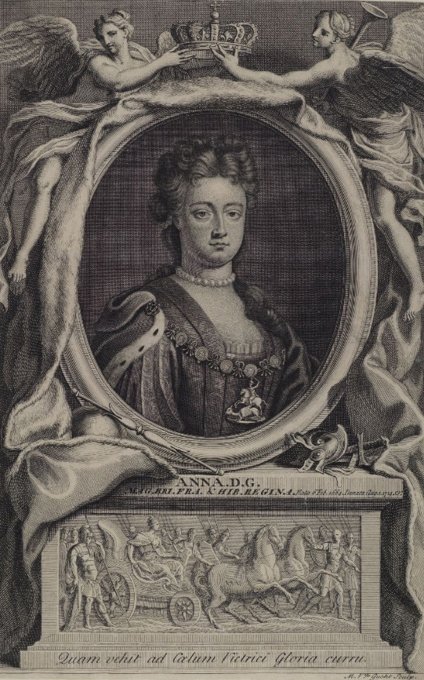
May 1707: A united kingdom?
Treaty of Union uniting the parliaments of Scotland and England comes into effect.
The main reason England pursued a union with Scotland was to prevent the possibility of having a Hanoverian king in England and a Stuart king in Scotland.
The English feared the possibility of a war on two fronts against Scotland and France. Article II of the treaty would secure the Hanoverian succession in both kingdoms.
March 1708: Support from France
A supporting force of around 6,000 troops sails for Scotland from France.
This was done to inspire Jacobite support and capitalise on anti-Union feeling in Scotland.
April 1708: The French turn back
Following an unsuccessful attempt to land in Scotland, the French ships return to Dunkirk.
The French ships were closely pursued by the Royal Navy, making it impossible for their troops to disembark. The subsequent lack of French support on the ground discouraged Scottish Jacobites from rising at this time.
August 1714: Queen Anne dies
The death of Queen Anne leads to succession of the Hanoverian George I.
The Act of Settlement passed in 1701 (see above) meant that with Sophia dying ahead of Queen Anne, the succession passed to Sophia's son, George.
August 1715: Jacobite rising of 1715
John Erskine, Earl of Mar, raises the Jacobite standard at Braemar, starting the 1715 rising.
The Jacobite manifesto was then printed in September 1715 to encourage Scots to join the rising. It states James Francis Edward Stuart's claim to the throne, and dismisses that of George I.
It also offers financial incentives to officers and soldiers to "join with us in our King and countrey's cause". The cause being the abolition of the Union.
November 1715: Battle of Sherrifmuir
The Jacobite army fights government forces at the Battle of Sherrifmuir.
The battle was fought between the Jacobite forces led by the Earl of Mar and the government troops commanded by the Duke of Argyll. Although the battle was indecisive, it effectively halted the Jacobite advance, weakening their position in the rising.
December 1715: Lack of support continues
James Francis Edward Stuart arrives at Peterhead but departs Scotland in February 1716 due to a lack of support.
Jacobite support from France was dependent on whether or not France was at war with Britain. In 1715 it was not. France was financially exhausted by the almost constant wars of Louis XIV. He died on the eve of the 1715 rising, and the more conservative Duke who replaced him as regent for the infant Louis XV did not wish France to become involved in another war with Britain.
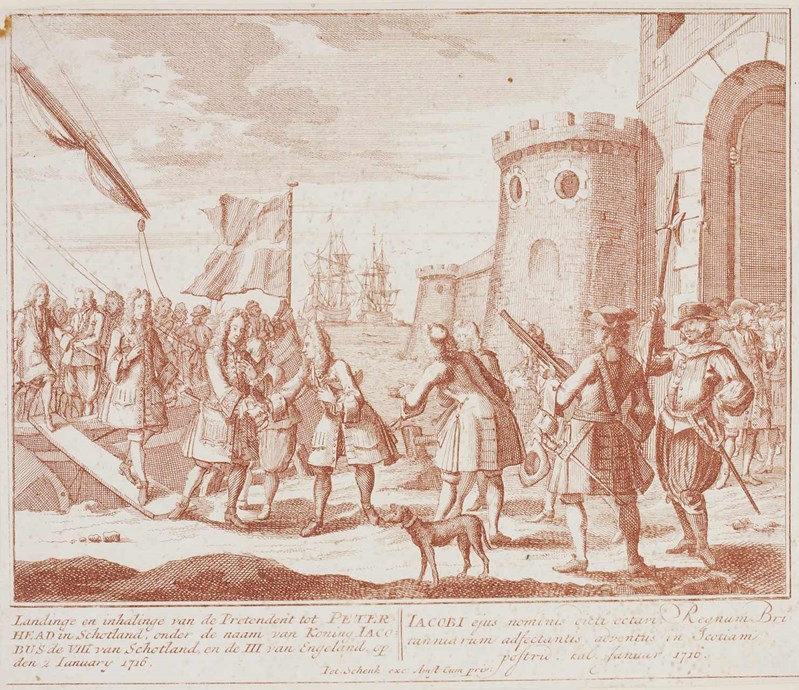
July 1717: The Indemnity Act
The Indemnity Act frees Jacobite prisoners held after the 1715 rising.
A pardon was offered to Jacobites who would swear loyalty to George I. Notably, Rob Roy and clan MacGregor were excluded from the act.
March 1719: Spanish support arrives
A small Spanish force with Jacobite exiles arrives in Stornoway.
A larger invasion of England was planned, but severe storms damage the fleet and it is cancelled. The smaller force aimed to march on Inverness but they were intercepted at the Battle of Glen Shiel.
June 1719: Battle of Glen Shiel
Government forces defeat the Jacobites and their Spanish allies at the Battle of Glen Shiel, ending the rising.
The battle took place in the Scottish Highlands. Despite the strong resistance, the well-coordinated government forces managed to overpower them. This decisive victory marked the end of the 1719 Jacobite rising.
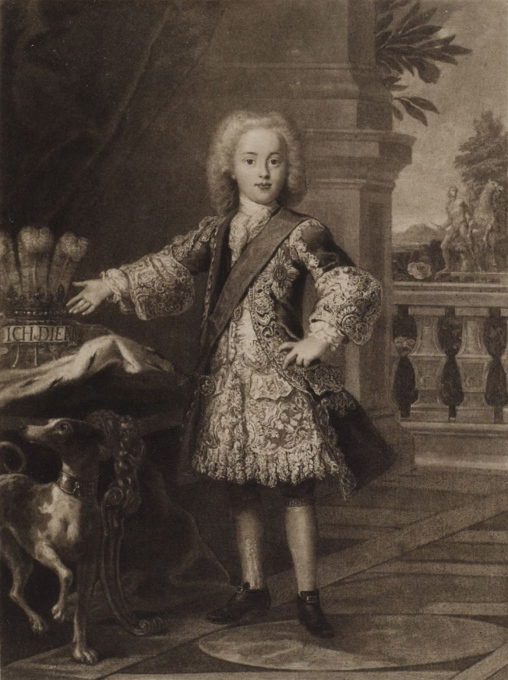
December 1720: Bonnie Prince Charlie is born
James's son, Charles Edward Stuart, is born in Rome, Italy.
Charles was later known by two nicknames. His charismatic and romanticised image as a charming and heroic figure during the Jacobite risings led to him being known as Bonnie Prince Charlie.
He was also known as the Young Pretender to distinguish him from his father, who was known as the Old Pretender. Both claimed the throne as legitimate heirs, but this was not recognised by the ruling government.
August 1745: Jacobite rising of 1745
Charles raises the Jacobite standard at Glenfinnan, starting the 1745 rising also known as the '45.
Some time had passed since the 1715 and 1719 risings. They had been led ineffectively and were insufficiently supported by allies on the continent. These risings left a distrust of James and a wariness amongst Scottish Jacobites to risk another rising. James himself had settled into an accepting exile.
It wasn't until another change in European politics saw France once again keen to step in. They wanted to use the Jacobites to destabilise an increasingly powerful Britain to reignite their interest in the Stuarts. This, combined with the generational change amongst Scottish Jacobites provided by Charles in the meantime, set the scene for the 1745 rising.
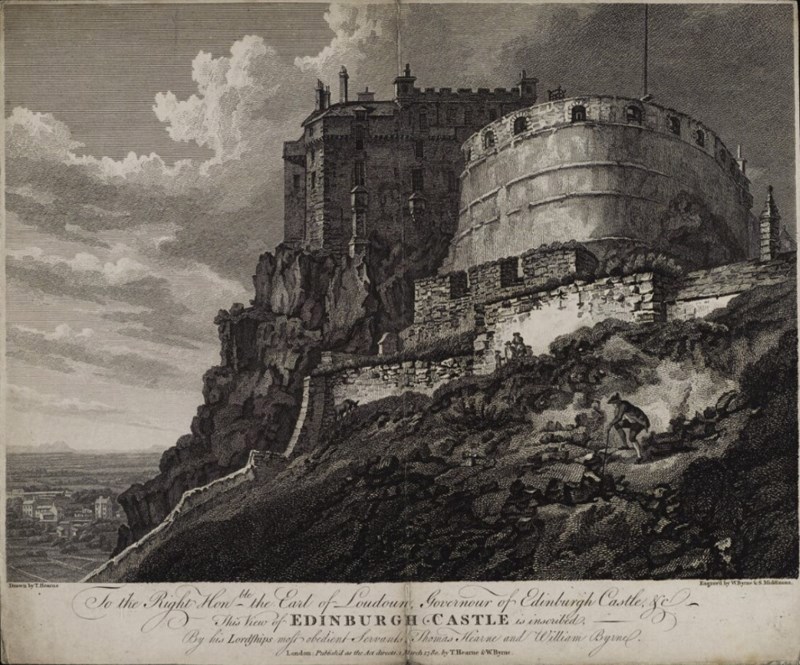
September 1745: Battle of Prestonpans
The Jacobites defeat government forces at the Battle of Prestonpans in East Lothian.
The government forces under General Cope had been trying to intercept the Jacobite army in the Highlands but had failed to engage with it. When Cope realised the Jacobites were on the road to Edinburgh he took a ship to Dunbar as the fastest way to return south to defend the city. He arrived too late to prevent the capital (with the exception of the Castle) falling to the Jacobites.
As Cope's army marched towards Edinburgh, the Jacobites came out to confront it led by Charles. They clashed at Prestonpans where Cope's inexperienced troops were defeated and forced to retreat.
October 1745: Declarations
Charles issues two declarations: dissolve the Union and reject the 1701 Act of Settlement.
The first aimed to dissolve the Union of 1707, which had unified Scotland and England.
The second declaration rejected the 1701 Act of Settlement, which ensured a Protestant succession to the English throne.
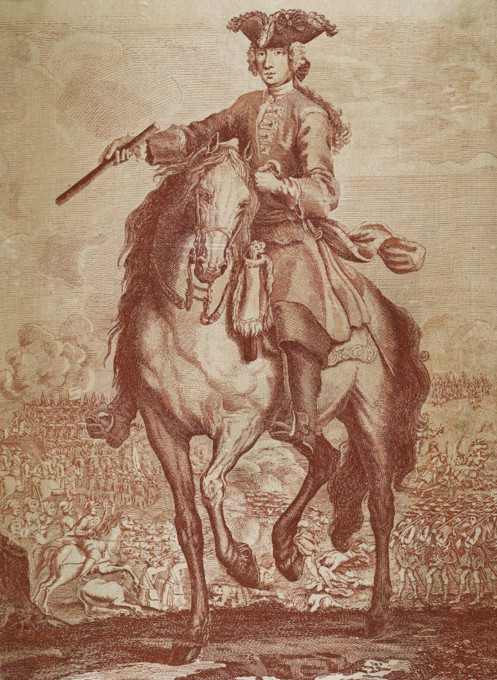
November 1745: Jacobites capture Carlisle
The Jacobites invade England and capture Carlisle.
Led by Charles, the Jacobites, after a brief but intense confrontation, successfully captured the city and Carlisle Castle.
December 1745: Retreat
The Jacobite army reaches Derby but turns back after support fails to appear.
English Jacobites only ever rose in small numbers. Without the promised French support and the lack of significant English Jacobite reinforcements, the Jacobites were forced to retreat.
January 1746: Battle of Falkirk Muir
The Jacobites defeat government forces at the Battle of Falkirk Muir.
The largest engagement of the 1745 Jacobite Rising. Despite the harsh weather conditions, the Jacobite forces managed to defeat the government troops, inflicting casualties and capturing many soldiers.
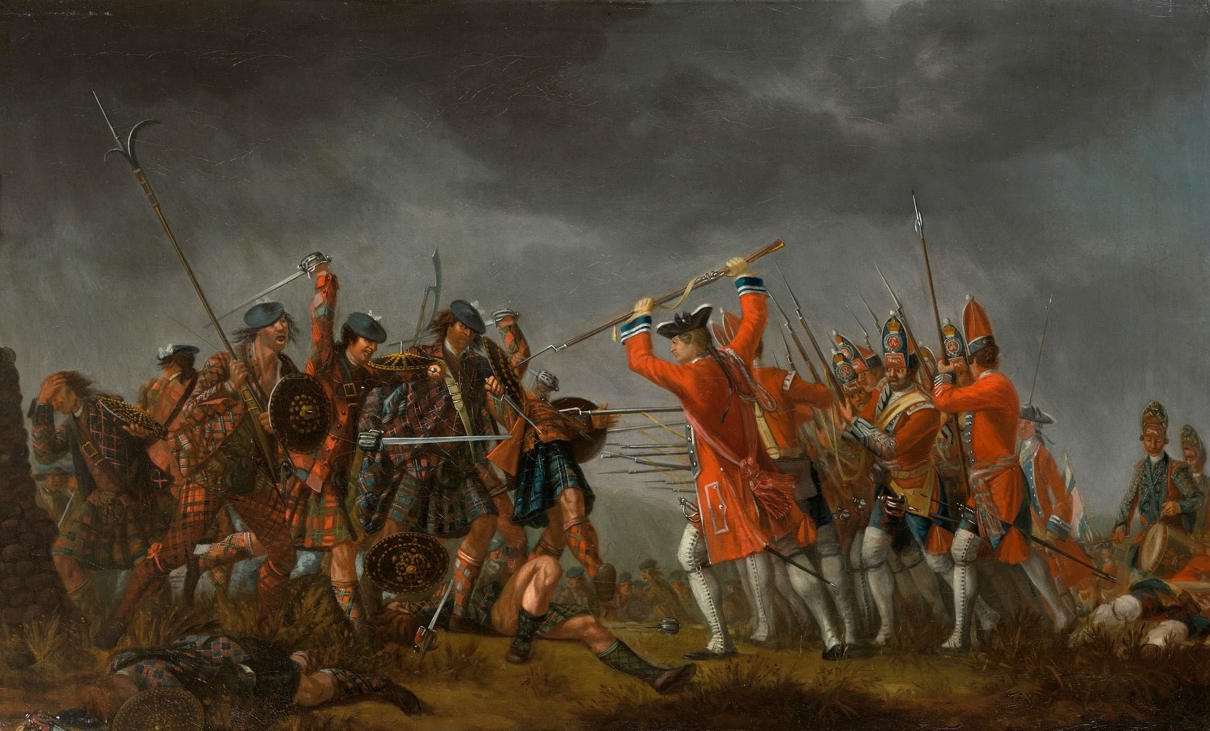
April 1746: Battle of Culloden
Government forces defeat the Jacobites at the Battle of Culloden, ending the rising.
Despite the Jacobites winning the Battle of Falkirk Muir, they failed to press their advantage and retreated to Inverness. By this time, the government forces were under the command of the Duke of Cumberland who marched on the Jacobites from Aberdeen. A night attack attempt on Cumberland's camp at Nairn was called off as the Jacobites took too long to make the march and lost the element of surprise.
The armies met the following day on Culloden Moor where the Jacobites were decisively defeated. Cumberland's order to "give no quarter to wounded Jacobites and those retreating from the battle" earned him the nickname The Butcher by his opponents.
Though the rising was not considered to be over, the Jacobite army dispersed and Charles began his flight to Lochaber and the Hebrides to evade capture.
With the government once again in control of Scotland, Jacobites were ruthlessly hunted down and laws were passed to suppress aspects of Highland culture and the clan way of life.
June 1746: Charles escapes
Flora MacDonald helps a disguised Charles evade government capture and escape back to France.
Bishop Robert Forbes was deeply involved in the Jacobite cause. After the defeat at the Battle of Culloden, Forbes began collecting Jacobite relics and documents. His collection, known as 'The Lyon in Mourning', includes a fragment of the dress worn by Charles while disguised as Flora MacDonald's maid.
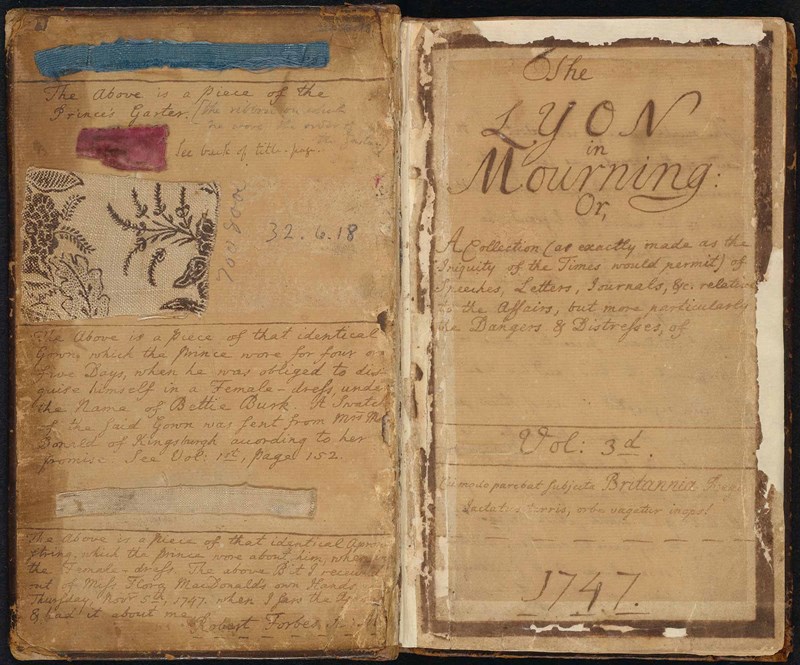
August 1746: Act of Proscription
The Act of Proscription prevents the carrying of arms and the wearing of highland dress to prevent further risings.
One of a series of acts intended to diminish the feudal nature, and therefore the power, of the Scottish clan system. It includes restricting the wearing of Highland dress, the bearing of arms, and the inherited right of clan chiefs to hold courts of law.
April 1747: Executions and pardons
Jacobite lords Kilmarnock, Balmerino and Lovat are executed.
Lord Lovat had previously sided with the government in the 1715 rising but switched his allegiance to the Jacobites in 1745. After he was found guilty of treason he was beheaded.
Many Jacobite prisoners, including Flora Macdonald, are pardoned following the Act of Indemnity.
June 1747: The Vesting Act
The Vesting Act allows the valuation of Jacobite estates and possessions, which are forfeited to the Crown.
The estates of several prominent Jacobite supporters are confiscated, and the lands and rents assessed for their value.
January 1766: The Old Pretender dies
The death of James Francis Edward Stuart.
James died on 1 January 1766 at the Palazzo Muti in Rome. He was buried with royal honours in the basilica of Saint Peter's. His sons were later buried with him and a monument by Canova erected in 1819 marks their grave.
Confirming the Jacobites were now consigned to history, the soon to be George IV gave 50 guineas of the cost.
January 1788: The Young Pretender dies
Charles Edward Stuart dies in Rome.
The Jacobite cause effectively ended with the defeat at the Battle of Culloden. But the death of Charles symbolised the final closure of this chapter in British history. His passing marked the end of an era, leaving behind a legacy of romanticised rebellion and cultural impact.
Dive deeper
'Lyon in Mourning' manuscripts
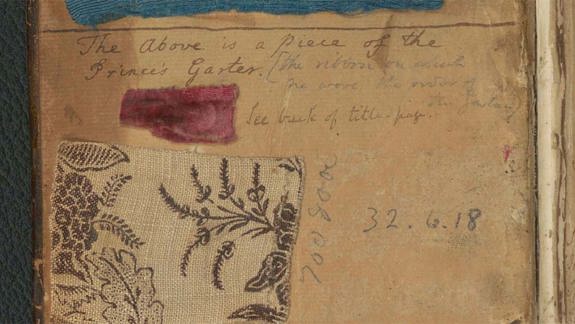
Jacobite prints and broadsides
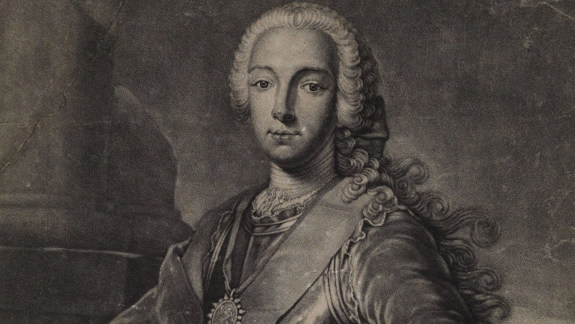
Archives and manuscripts catalogue
